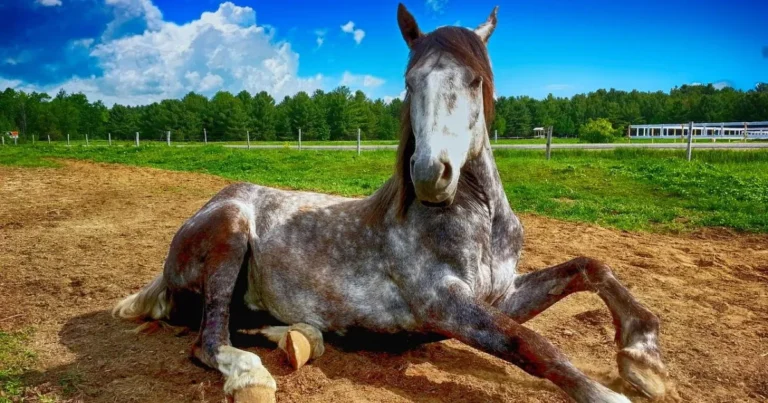Are Bunnies Rodents? Understanding Their Classification
Table of Contents
Are Bunnies Rodents?
Many pet owners and nature lovers wonder if bunnies are rodents. Rabbits and rodents, like squirrels, share some traits. But their classification is key for biology and care.
Understanding if rabbits are rodents helps us know their diet, behavior, and health needs. This question is important.
Some people think rabbits are rodents because of their similarities. But science says they belong to a different family. Learning about their true family, Lagomorpha, shows their unique traits.
This article will explore why people think rabbits are rodents. We’ll also look at the facts that show they are not.
Key Takeaways
- Rabbits belong to the Lagomorpha order, not the rodent family.
- Classifying animals correctly affects how we study and care for them.
- Myths about rabbits as rodents often mix up shared traits like teeth and size.
- Modern science uses genetics and anatomy to clarify their true classification.
- Knowing their real category helps owners and scientists better understand their habits.
Overview of Bunny Taxonomy
Classifying animals helps scientists understand life on Earth. Bunny taxonomy shows where rabbits fit in nature’s family tree. Early studies thought they were part of the rodent family. But today, we know surprising truths.
Historical Perspective on Rabbit Studies
For centuries, scientists grouped animals by how they looked. Carl Linnaeus, the father of taxonomy, put rabbits near rodents. He based this on their teeth and size. But these early methods didn’t find the deeper genetic links.
Modern Classification Methods
Now, labs use DNA to understand species ties. Modern tools like genetic sequencing show rabbits are in the Lagomorpha order. This is different from the rodent family. They have extra teeth and unique digestion traits.
| Category | Historical Approach | Modern Approach |
|---|---|---|
| Key Focus | Physical traits | Genetic markers |
| Tools Used | Visual observation | PCR, DNA sequencing |
| Rabbit’s Group | Linked to rodent family | Separate Lagomorpha order |
These advances show where rabbits truly belong. By comparing old and new methods, we see why the rodent family label doesn’t fit. Science keeps updating nature’s family tree with each new discovery.
What Defines a Rodent Family
Rodents are a big group of mammals. What makes them stand out? Families like squirrels or mice share certain features. First, their teeth are sharp and chisel-shaped, called incisors. These teeth grow all the time, perfect for gnawing.
Second, their way of reproducing. Most rodents have short pregnancies and have many babies at once.
What is a family of a rabbit is different. Rabbits also have long incisors, but their molars are different. Rodents don’t have canine teeth, creating a gap between their front teeth and back molars. This gap helps them bite and chew plants well.
- Teeth structure: Rodents rely on constant tooth growth to gnaw wood and tough plants.
- Genetic markers: DNA studies confirm rodents share specific chromosome patterns.
- Habitat adaptation: Many rodents burrow, but this isn’t exclusive—rabbits also dig, yet lack rodent-specific traits like a split lower jaw joint.
Scientists classify families based on these clues. For example, rabbits belong to the Leporidae family, separate from rodents. Their digestive systems also differ: rodents can’t re-chew food like rabbits do. This distinction matters because misclassifying animals can affect conservation efforts and ecological studies.
Differences Between Rabbits and Rodents
Spotting the differences between rabbits and rodents starts with looking closer at their bodies and habits. Let’s break down what makes them unique!
Physical Differences
Key anatomical traits set rabbits apart:
- Teeth: Rodents (like squirrels) have front teeth that grow constantly. Rabbits have a gap (diastema) behind their two large upper incisors.
- Fur: Rabbit fur has two layers—a soft undercoat and protective outer hairs. Rodents like mice have single-layer coats.
- Tail: Rabbits have short, fluffy tails (like the cottontail’s namesake). Rodents like rats have long, scaly tails.
| Body Part | Rabbit | Rodent |
|---|---|---|
| Footprints | Indented pads (like wild European rabbits) | Sharper claw marks (e.g., chipmunks) |
| Ears | Long, upright ears (jackrabbits) | Smaller ears (like voles) |
Behavioral Characteristics
Watch how they act in nature:
- Rabbits live in underground warrens with complex tunnel systems. Rodents like gophers dig simple burrows.
- Rabbits thump their hind legs to warn others. Rodents like hamsters freeze or scurry when threatened.
- Rabbit groups are called “herds,” while many rodents (like prairie dogs) live in family units.
These clues help spot whether that hopping creature is a true rabbit or a rodent relative!
Are Bunnies Rodents? Examining the Question
For years, people have wondered if bunnies are rodents. Let’s look at the facts. Bunnies and rodents do share some traits, like quick breeding. But, science shows they are different. DNA studies confirm that rabbits belong to the Lagomorpha order, not Rodentia.
“Genetic analysis proves rabbits and rodents diverged millions of years ago,” states a 2020 study in Zoological Journal.
- Rodents have a single pair of incisors
- Bunnies have two pairs of front teeth
- Lagomorphs digest food twice—rodents cannot
Old textbooks sometimes put them together, but that’s outdated. Taxonomists now agree: bunnies aren’t rodents. This mistake came from surface similarities. But, their anatomy and genetics show they have a unique path.
This clears up the confusion. So, the answer is clear: bunnies aren’t rodents. Their unique biology and scientific evidence settle the debate. Next, we’ll explore what defines their true family—Lagomorpha—in detail.
Criteria for Classifying Mammals
Scientists use genes and body features to sort mammals. These tools help tell bunnies apart from their rodent friends. Let’s see how these tools work in real research.
Genetic Markers in Classification
Genes act like nature’s ID cards. Researchers use DNA sequencing to compare species. Key points include:
- Shared genetic codes for species groups
- Mutations showing evolutionary paths
- Comparisons of ribosomal RNA patterns
For example, rabbit DNA lacks the rodent-specific RYR1 gene variant. This proves they’re not part of that group.
Anatomical Structures and Traits
Body shape and features give big clues. Key anatomical checks include:
- Teeth patterns (rodents have gnawing incisors, rabbits have split upper front teeth)
- Skull shape and ear size
- Limbs and foot structures
Zoologists also study tail length and bone density. These details matter—like how rabbit leg bones differ from mouse skeletons.
Exploring the Family of a Rabbit
Rabbits belong to the family Leporidae, part of the order Lagomorpha. This makes them different from rodents like rats or squirrels. They have two pairs of upper incisors and eat only plants.
- Family: Leporidae (includes 30+ species)
- Order: Lagomorpha (shared with hares and pikas)
- Distinctive traits: long ears, powerful hind legs, and specialized teeth
“Rabbits and rodents differ as much as cats do from dogs. Genetic studies confirm lagomorphs evolved separately over 60 million years ago.” — National Geographic, 2022
Studies show that lagomorphs and rodents split a long time ago. Wild European rabbits and cottontail rabbits are part of this family. They live in many places, from forests to deserts.
Their diet is mostly grasses and herbs. This is different from rodents, which eat a wide variety of foods. Knowing about their family helps us understand why rabbits behave in certain ways, like thumping their feet to warn others.
Understanding the Species of a Bunny
When asking what is the species of a bunny, it’s clear rabbits come in many shapes and sizes. They live in different places and behave in unique ways. There are over 80 species, each one special in its own way.
Common Bunny Species
Domestic rabbits (Oryctolagus cuniculus) are the ones you see as pets. They are also used in farming. Wild European rabbits are similar but live in the wild and dig burrows.
The eastern cottontail (Sylvilagus floridanus) lives in North America. It’s known for its soft tail and quick breeding. These rabbits are common in fields.
Less Known Varieties
The volcano rabbit (Romerolagus diazi) lives in Mexico’s volcanic areas. It has thick fur and lives in groups. The riverine rabbit (Bunolagus monticularis) of South Africa is very rare. It likes to live near rivers.
Each species has its own special features. Some live in deserts, while others live in mountains. Learning about these differences helps us see how amazing rabbits are. There’s so much to discover about these creatures!
Taxonomical Myths and Facts
Myths about rabbit classification often mix truth with fiction. Let’s clear up the most common misunderstandings with science.
Myths Debunked
One myth says rabbits are closely related to rodents. Another claims their teeth are similar to rats and mice. But, recent genetic studies prove these ideas are wrong.
| Myth | Fact |
|---|---|
| Rabbits are rodents | Rabbits belong to Leporidae, separate from rodent families like Muridae |
| They chew like rodents | Rabbits have two upper incisors, rodents have only one pair |
Scientific Evidence
A 2020 study in ZooKeys found rabbits and rodents diverged over 80 million years ago. Genetic markers show rabbits are closer to pikas and hares than to squirrels or guinea pigs.
“Rabbits are as unrelated to rodents as humans are to bats,” states Dr. Emily Carter, a mammalogist at the Smithsonian Institution.
- Genetic analysis proves rabbits lack rodent-specific chromosomal traits
- Skull structure differences confirm distinct classifications
Conclusion
Now you know bunnies aren’t rodents. This article looked into their special place in science. Rabbits belong to the Leporidae family, not with mice or squirrels.
Their teeth, skeletons, and behaviors show they’re different. This is important for pet care and protecting wildlife. Scientists use DNA and bone studies to confirm this.
Myths that say rabbits are rodents still exist. But, the truth is clear. This knowledge helps in caring for pets and supports conservation. Learn more about leporids or rodent taxonomy to understand better.
FAQ
Are rabbits considered rodents?
No, rabbits are not rodents. They belong to the family Leporidae, which includes hares and pikas. Rodents belong to the order Rodentia. They belong to separate classifications within the animal kingdom.
What is the family of a rabbit?
Rabbits belong to the family Leporidae. This family includes various species, like rabbits and hares.
What is the species of a bunny?
There are many bunny species. The European rabbit (*Oryctolagus cuniculus*), the Eastern cottontail (*Sylvilagus floridanus*), and the New Zealand rabbit (*Oryctolagus cuniculus* NZ White) are a few. Each has its own unique traits.
What sets rabbits apart from rodents?
Rabbits have long ears and specific dental patterns. Their behavior and reproductive traits are also different. These differences show they are not rodents.
Do rabbits have any similarities with rodents?
Yes, rabbits and rodents share some traits. They both eat plants and have social behaviors. But these similarities don’t mean they belong to the same family.
Can you explain the classification of bunnies?
Bunnies are classified under Lagomorpha, which includes rabbits and hares. Rodents belong to Rodentia. Their classification is based on genetics and anatomy, showing their differences.
Are there different types of rabbits?
Yes! There are many types of rabbits, from wild to domesticated breeds. Their looks, behavior, and habitats vary a lot.
What genetic markers are used to classify rabbits?
Scientists use DNA sequences and genetic markers to tell rabbits from rodents. These markers help understand their evolutionary ties.
Why are some myths associated with rabbits and rodents?
Misconceptions come from their looks and cultural views. Old classifications and names often mix up these groups, causing confusion.






